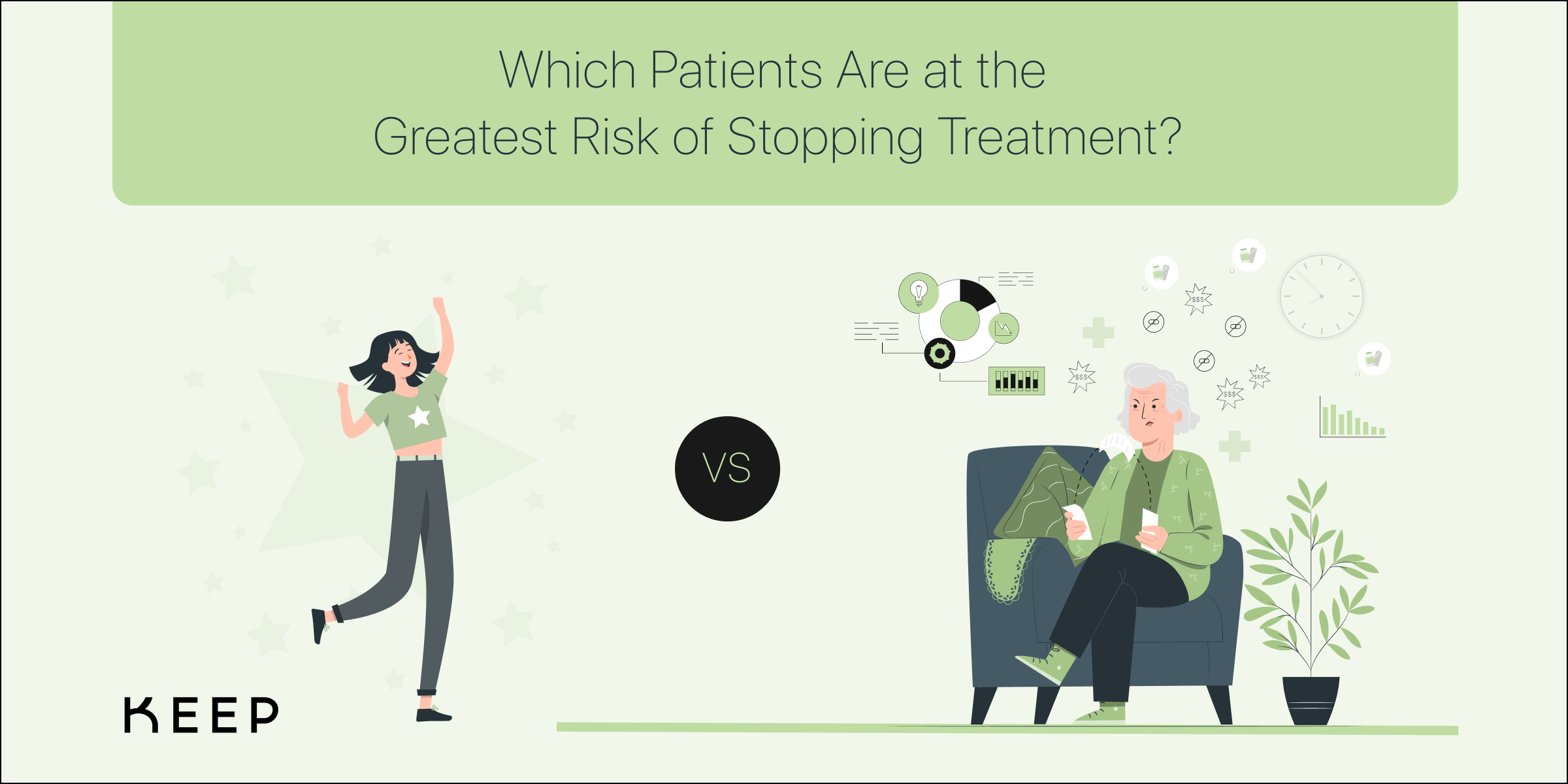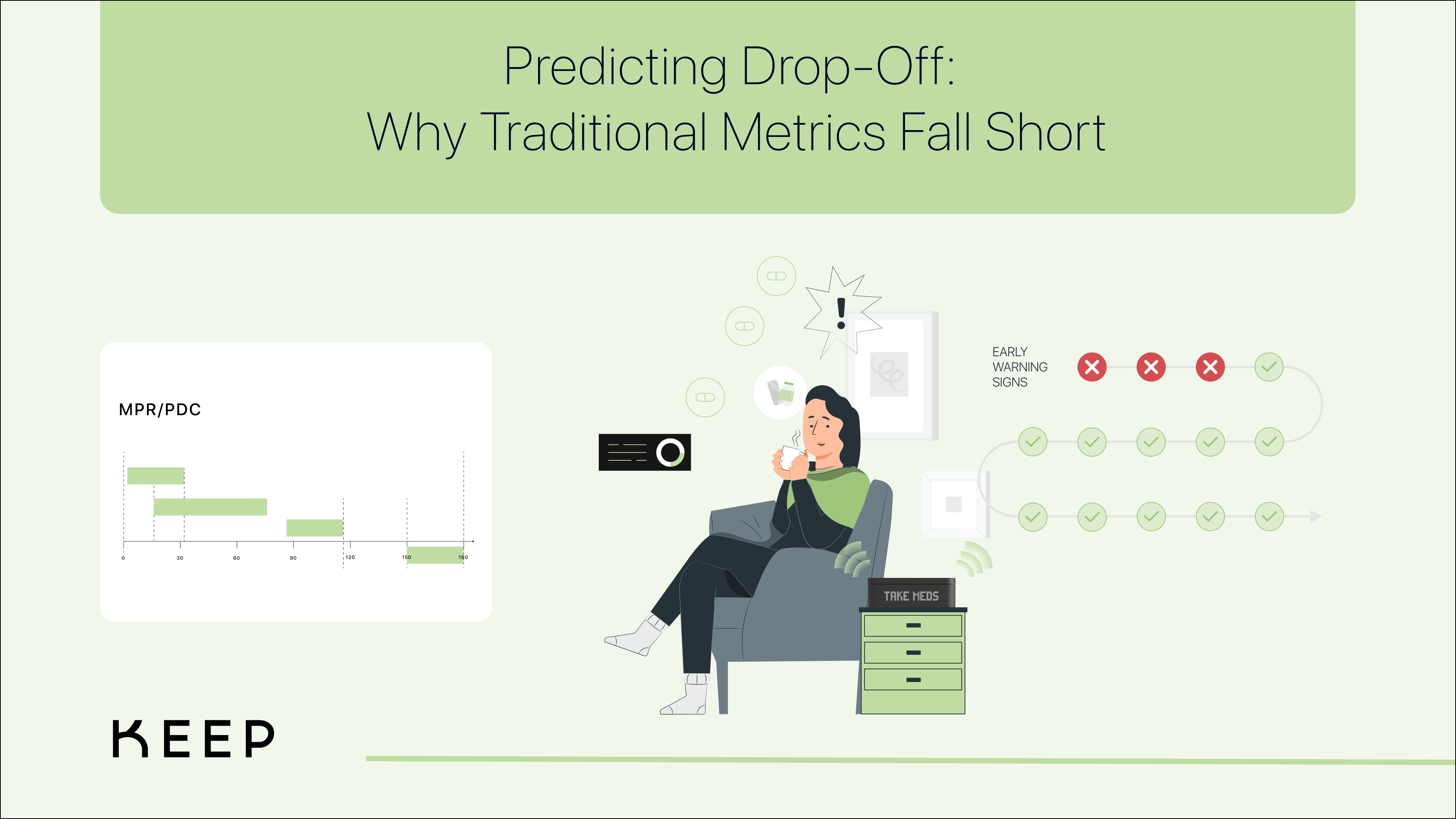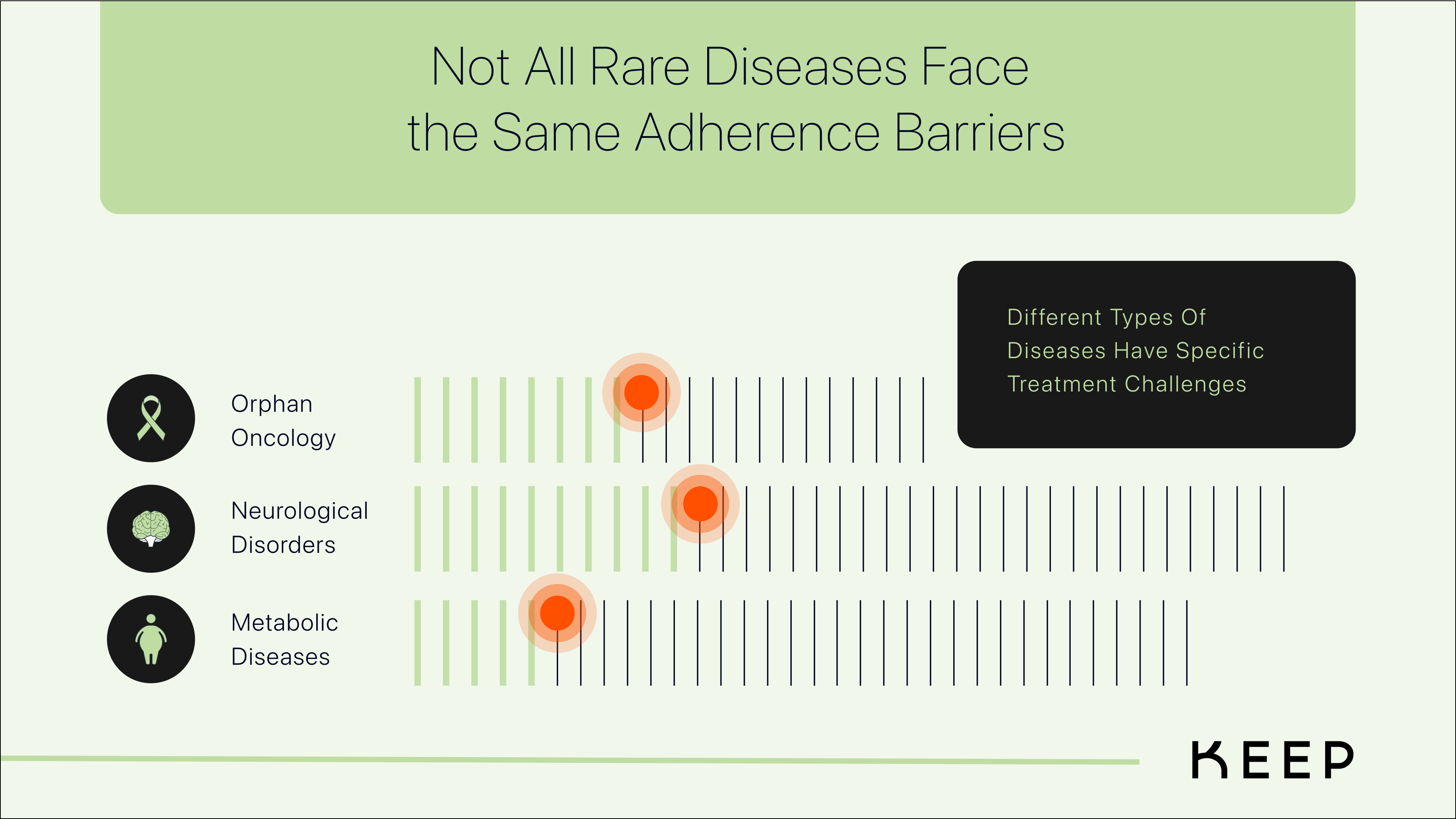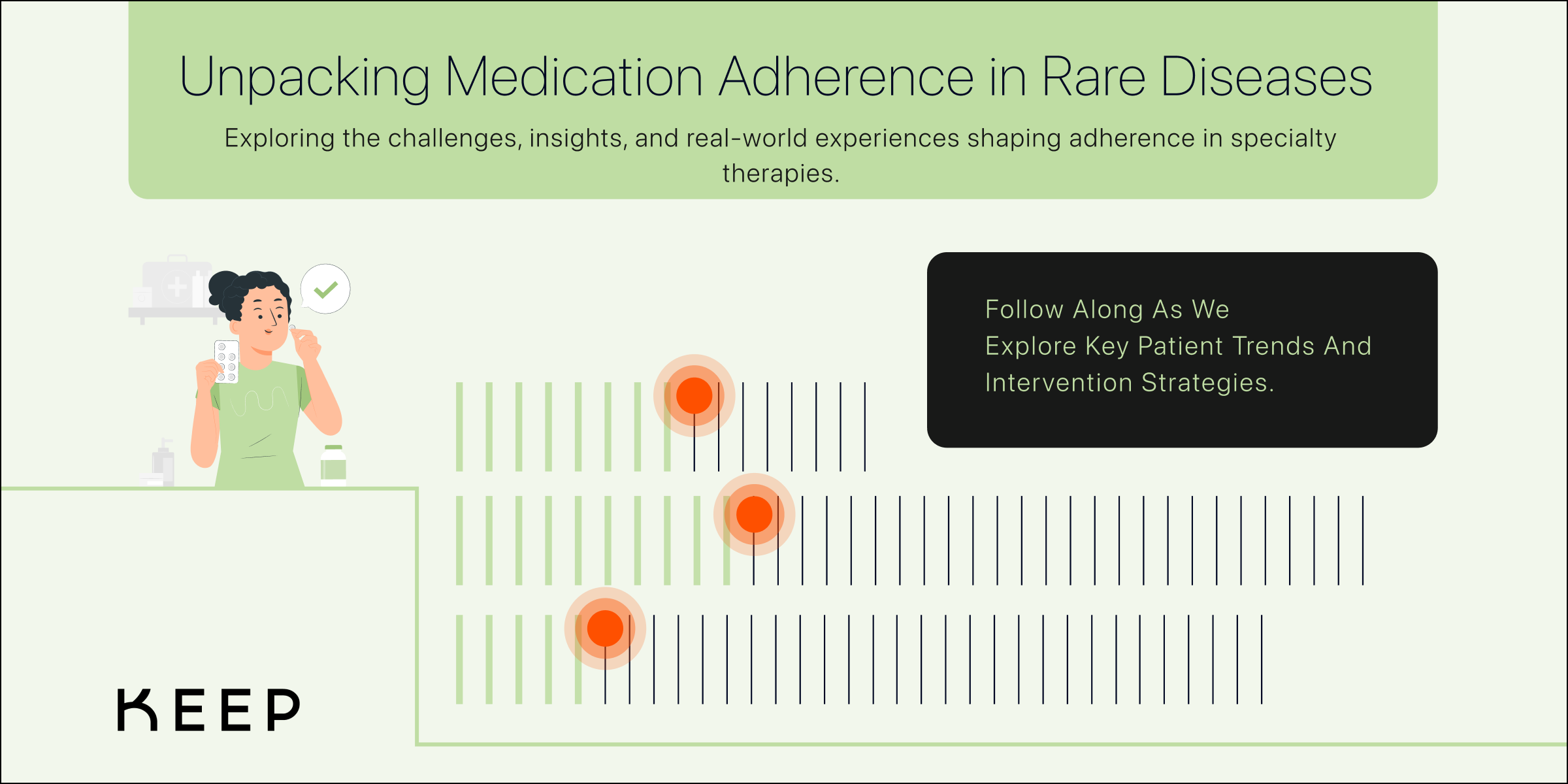Introduction: The Urgency of Understanding Non-Adherence
Medication non-adherence in rare and orphan disease populations is a critical challenge—over half of rare disease patients may eventually stop taking their medications, leading to worse health outcomes. Traditional adherence metrics such as Medication Possession Ratio (MPR) and Proportion of Days Covered (PDC) provide useful insights, but they only tell part of the story.
At KEEP, we go beyond just tracking refill data—we analyze the day-to-day medication behaviors of patients. By examining every dosing event, we gain real-time visibility into the early warning signs of therapy discontinuation. Are patients consistently taking their medication on time? Are they delaying doses, skipping them, or self-rationing due to side effects or cost? These behaviors matter because they shape long-term adherence patterns.
The first 60 to 90 days of therapy are crucial. This is when patients establish behaviors, experience the medication’s impact, and either develop a routine or struggle to integrate treatment into their lives. Understanding what happens in this window allows us to identify high-risk patients sooner and intervene before they drop off therapy altogether. If we can get more granular and react faster, why wouldn’t we?
Late Refills and Gaps: A Precursor to Dropout
Patients who consistently refill prescriptions late (e.g., a 30-day supply refilled every 40+ days) show lower overall adherence and are at high risk of discontinuation. A pattern of delayed refills or skipped months often precedes permanent dropout.
For example, a patient who starts stretching refill intervals—refilling every 35 days instead of 30—may be self-rationing due to side effects, financial concerns, or a perceived lack of need. Even a single >7-day gap in supply has been associated with an increased likelihood of dropout within the next few months.
Tracking these gaps in real time—rather than waiting for multiple late fills—can provide earlier warning signs of therapy disengagement.
Partial Fills and Dose Reductions: Self-Adjusting Without Clinical Guidance
Some patients attempt to manage costs or side effects by reducing their dosage or splitting doses (e.g., taking a pill every other day instead of daily). This behavior appears in pharmacy claims as partial fills (picking up less than the prescribed quantity) or extended days supply (a prescription lasting longer than expected).
While patients may view this as a way to control side effects or costs, self-adjusting doses can lead to subtherapeutic treatment and eventual therapy failure. Patients who start altering their medication schedule on their own are significantly more likely to discontinue treatment over time.
Early Refill Cessation: Urgent Warning
One of the strongest indicators of long-term adherence risk is failing to refill after the first prescription. Many patients stop within the first 30-60 days, never refilling after an initial trial.
This behavior is often linked to:
- Affordability issues: High copays or loss of financial assistance.
- Immediate side effects: Patients stopping due to early discomfort.
- Lack of perceived benefit: If the medication does not provide rapid improvement, motivation can fade.
First-fill abandonment rates increase dramatically with cost. When patients faced >$100 copays, nearly 75% abandoned therapy (pmc.ncbi.nlm.nih.gov). This early window represents the highest risk period, making it a critical time for intervention.
Rethinking Adherence: Why Daily Patterns Matter More Than Ever
Traditional refill tracking provides lagging indicators of adherence risk. By the time a patient has missed a refill, they are already at high risk for dropping therapy.
- MPR and PDC are useful, but they don’t capture real-time medication behaviors.
- Every missed, late, or skipped dose is an opportunity for intervention.
- The first 60-90 days of therapy are the foundation for long-term success.
If more granular data is available—tracking not just refills but daily medication-taking behaviors—then earlier, more effective interventions become possible. The ability to detect risk sooner can mean the difference between a patient staying on life-saving therapy or falling through the cracks.





